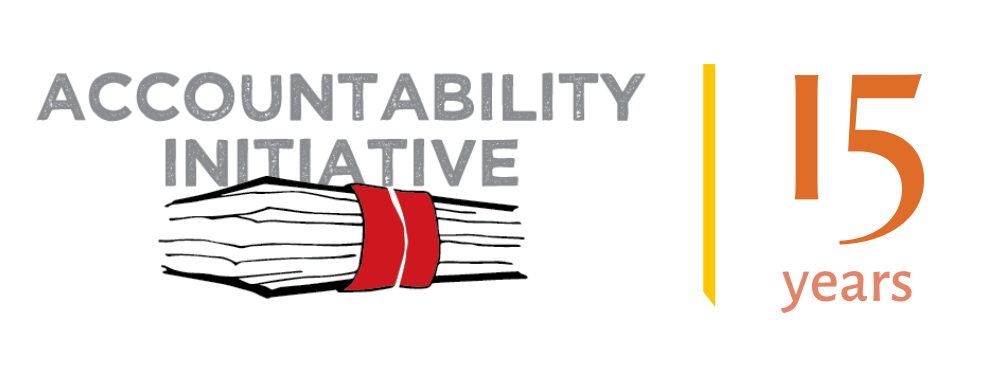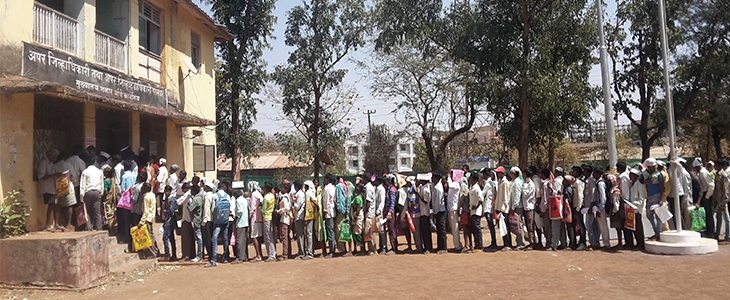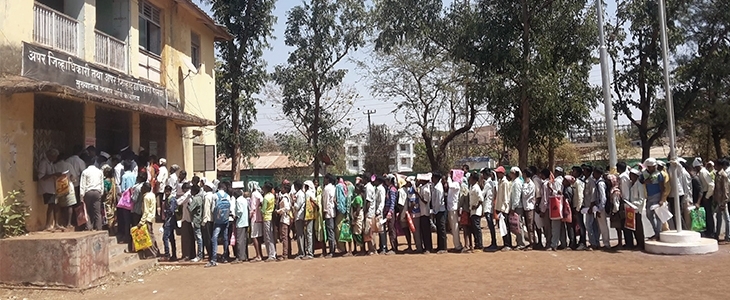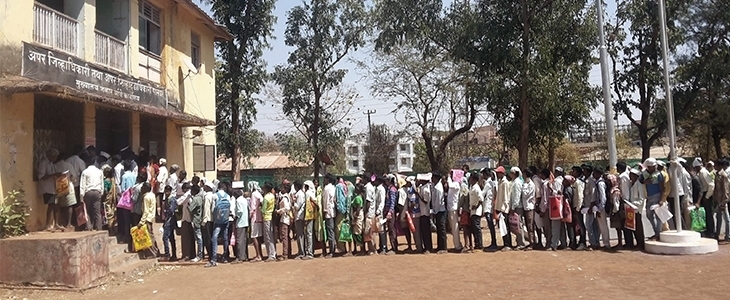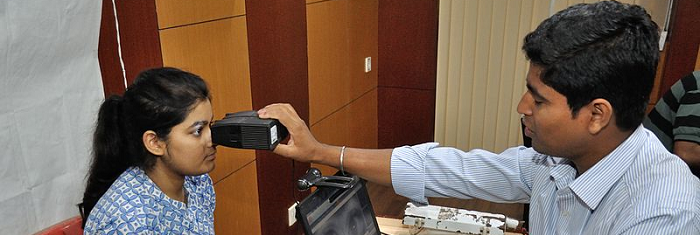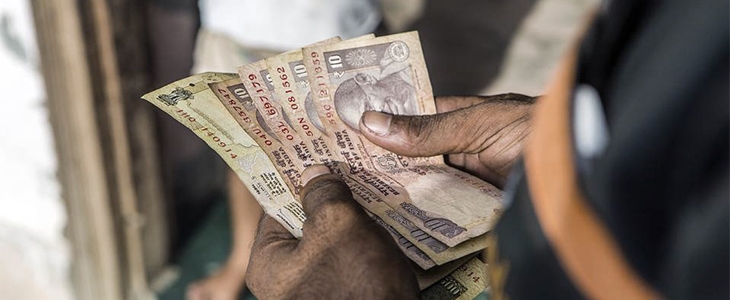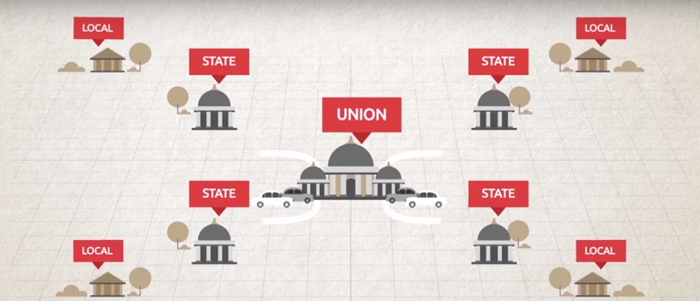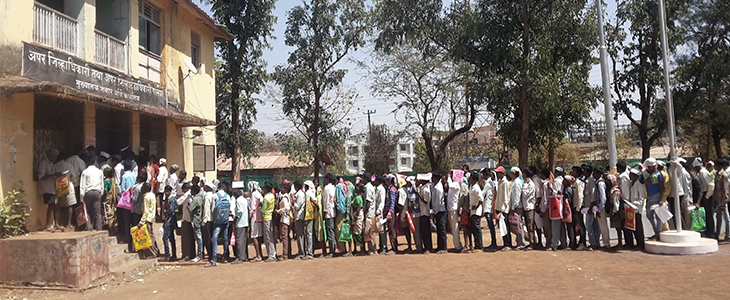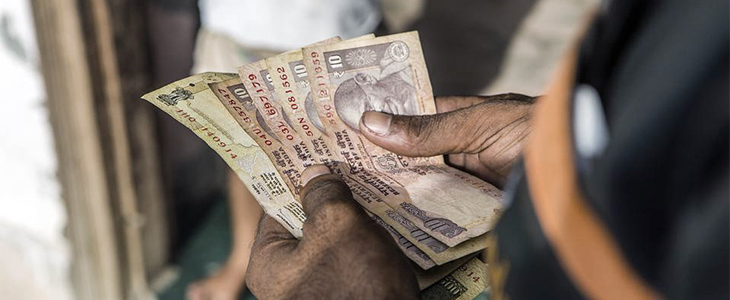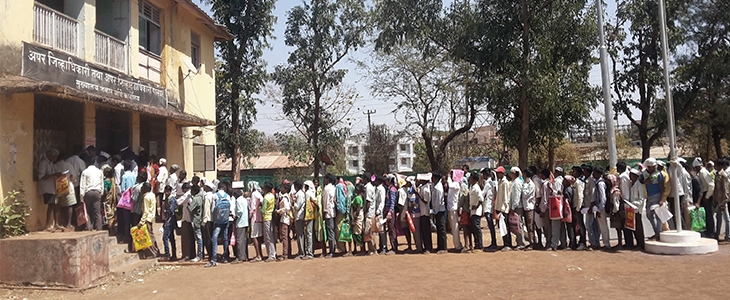This is the sixth part of an eight-part series on the challenges and life hacks in experiencing and accessing government benefits and services.
The recent push by successive governments towards a digital, transparent and more efficient public service delivery system in India is praiseworthy, notable for its focus on harnessing the power of technology to bring about social change.
But are we really ready for the massive overhaul that we seem to be moving toward? Accounts from a survey of Aadhaar Based Biometric Authentication (ABBA) efforts, conducted by student volunteers and researchers across 5 states in the country in 2016, to assess the implementation of the National Food Security Act (NFSA) seem to suggest otherwise.
Evidence, both empirical and anecdotal, points towards several implementation gaps and lacunae at the ground level, despite a concerted government-led push to promote Aadhaar as a panacea to cure public service delivery systems. These gaps, mainly at the level of institutionalising Aadhaar, can be attributed largely to logistical and infrastructural issues.
Radha Devi*, a resident of a small village in Satna (one of the most backward districts of Madhya Pradesh, with a sizeable chunk of the population living below the poverty line) recounted with horror the many obstacles her family had to overcome to get their Aadhaar cards made in order to access their entitlement of 35 kg ration under the Antodyaya category of the NFSA.
To begin with, sometime last year, all residents of the village were told in a gram sabha meeting that having an Aadhaar card was mandatory under the new NFSA rules. Without this card existing ration cards would get cancelled, SAMAGRA IDs would be invalidated, and ultimately families would be unable to purchase grain from the fair price shop. This was closely linked with the introduction of new Point-of-Sale (PoS) machines, which were technically advanced enough to facilitate fingerprint recognition in order to avoid any duplication or identity fraud under the Public Distribution System (PDS).
The first difficulty was applying for the Aadhaar cards itself. Because of the hilly and rocky terrain, the registration camp was not set up in Radha Devi’s village, and all residents were advised to go to the nearest district centres to get enrolled – a fair 13 km walk over the other side of the mountain. Radha Devi and her family visited this camp on three separate occasions before they were finally able to enrol for their card. The loss in wage while a mere inconvenience in the eyes of the state, meant one less meal for her family for each day.
Another issue was Radha Devi’s husband’s calloused hands (because of work on his farm), which the biometric system was unable to recognise, resulting in registration issues. Well-meaning (and also impatient) villagers in the line suggested everything from Vaseline to coconut oil, and even scaling the top layer of his skin in order to proceed. Fortunately, Manoj was able to record his details without inflicting any physical harm to himself, and was fifth time lucky in getting his information uploaded.

Nonetheless, getting enrolled turned out to be only the tip of the iceberg. On the day of the visit to the PDS shop for collecting ration, the PoS machine did not match his prints, or his wife’s, and it was their 8 year old son Munna who was finally called to step in and match his prints, so that the family could finally purchase grain.
Further, Radha Devi’s village also does not have access to any internet or mobile towers, and the entire village still relies on a crooked red landline phone in the Sarpanch’s house to receive calls. While many own a mobile, they must walk a kilometre or two outside to receive a signal. As a result of this, even though the PoS machine did not need an active internet connection to operate, the uploading and seeding of data, updates and changes to family IDs, Aadhaar details etc. required the dealer to physically take the machine out of the village. The entire process of data uploading takes a week or more at the beginning of the month. Radha Devi spoke of how this led to frequent delays in receiving ration entitlements, along with disruptions at the time of sale, most notably due to “Invalidated SAMAGRA IDs” – the government IDs that became dysfunctional due to incorrect or mismatched seeding of Aadhaar numbers.
A final issue was the addition and deletion of new members in the family’s ration cards. While earlier all births and deaths were recorded in the Panchayat register in an on-the spot manner, (sparking nonetheless concerns over efficiency and corruption), the technological advancements under Aadhaar have raised a completely new set of issues. As most villagers continue to be illiterate, unable to operate computers or make changes online, this has resulted in a parallel economy of “technical middlemen” who charge a “small fee” to “assist” the villagers in the process to update their details.
A peculiar case is also that of young kids below the age of 5, where even the government policies and state rules seem to vary from area to area. Previous research has indicated the futility of enrolling infants in the Aadhaar database, given how their fingerprints are still developing, but the iron fisted bureaucratic diktats around this scheme have ensured that such orders of “universal seeding” are being complied with nonetheless, or resulting in revoked entitlements.
The problem ultimately, with Aadhaar, may not be one of intent (though its’ potential for misuse remains high), but at a more basic level of the sheer incapacity of the state system to tackle implementation issues. The shift to a digital and technology-dependent public service delivery system is perhaps imminent, and even unavoidable, but before jumping on the technological bandwagon, a more comprehensive SWOT analysis of the state machinery and conditions in the hinterland, which holds more than 75% of India’s 1.2 billion population may be in order?
It is important for one to keep in mind that the ultimate goal of a welfare state is to facilitate access to rights of the people – if the very force intended to do so ends up acting as a disruptor, then a reassessment of its’ modalities, strategy for implementation, and need to strengthen more fundamental necessities may be warranted as a precondition.
*Name has been changed to protect identity.
